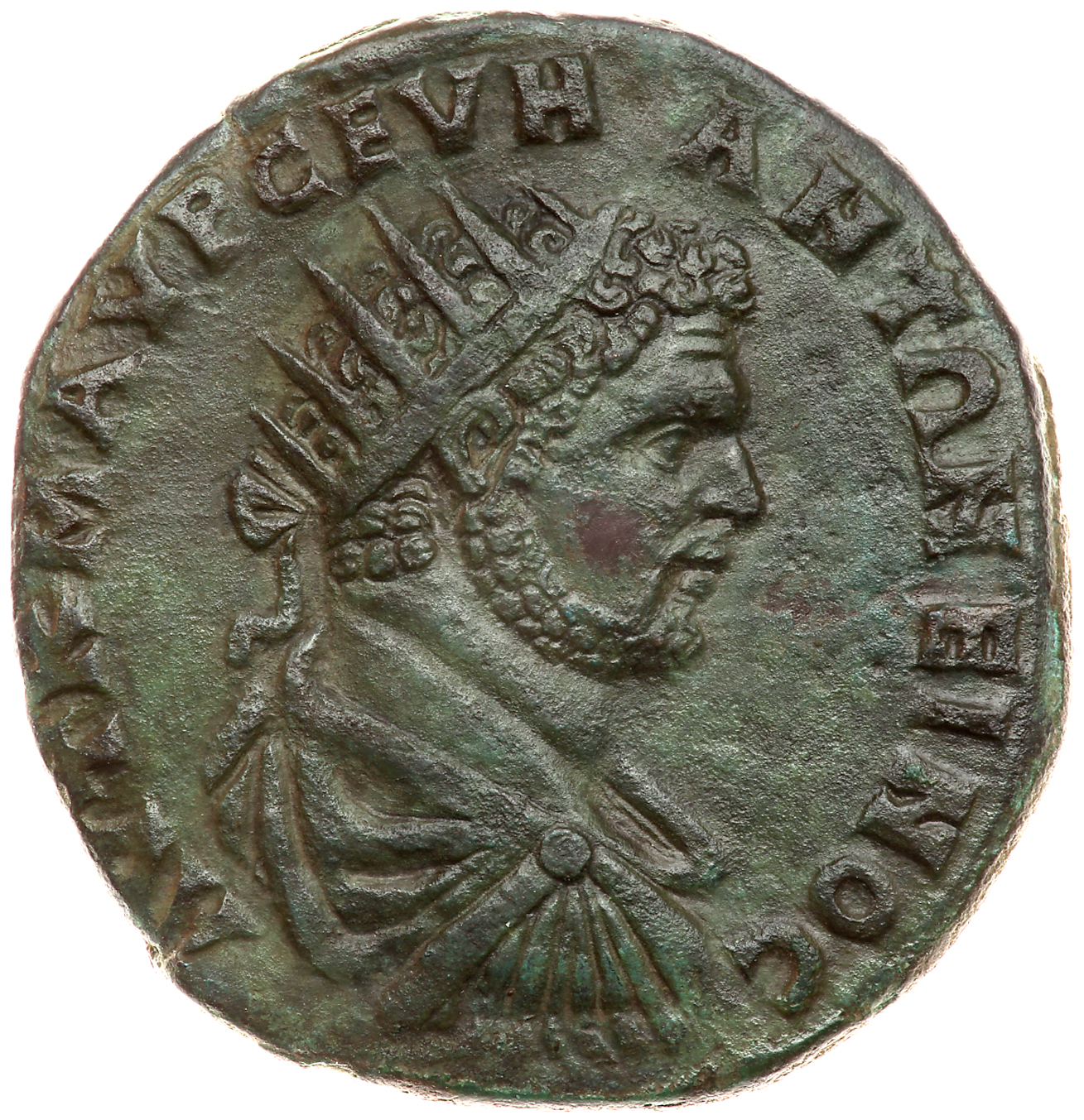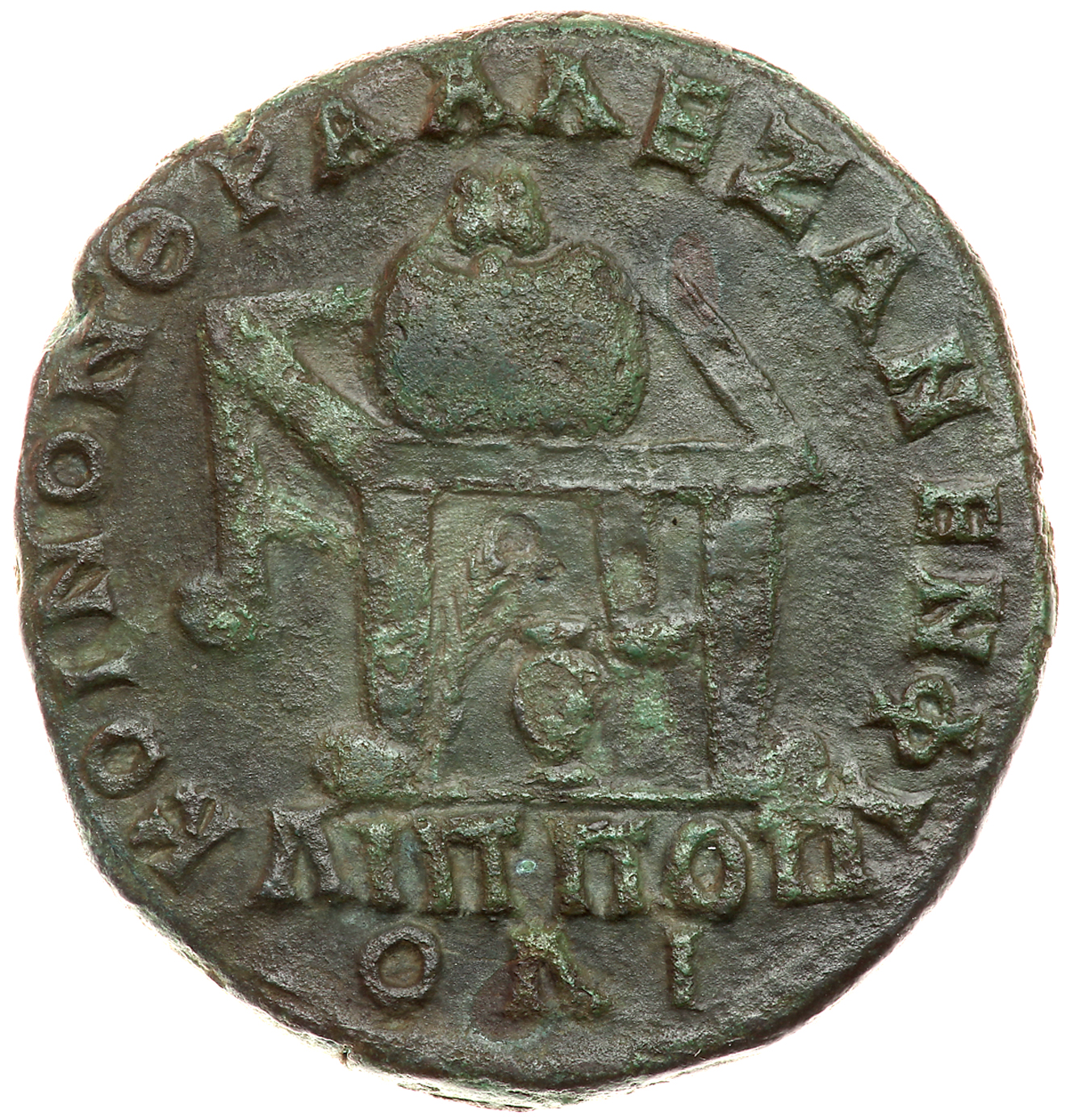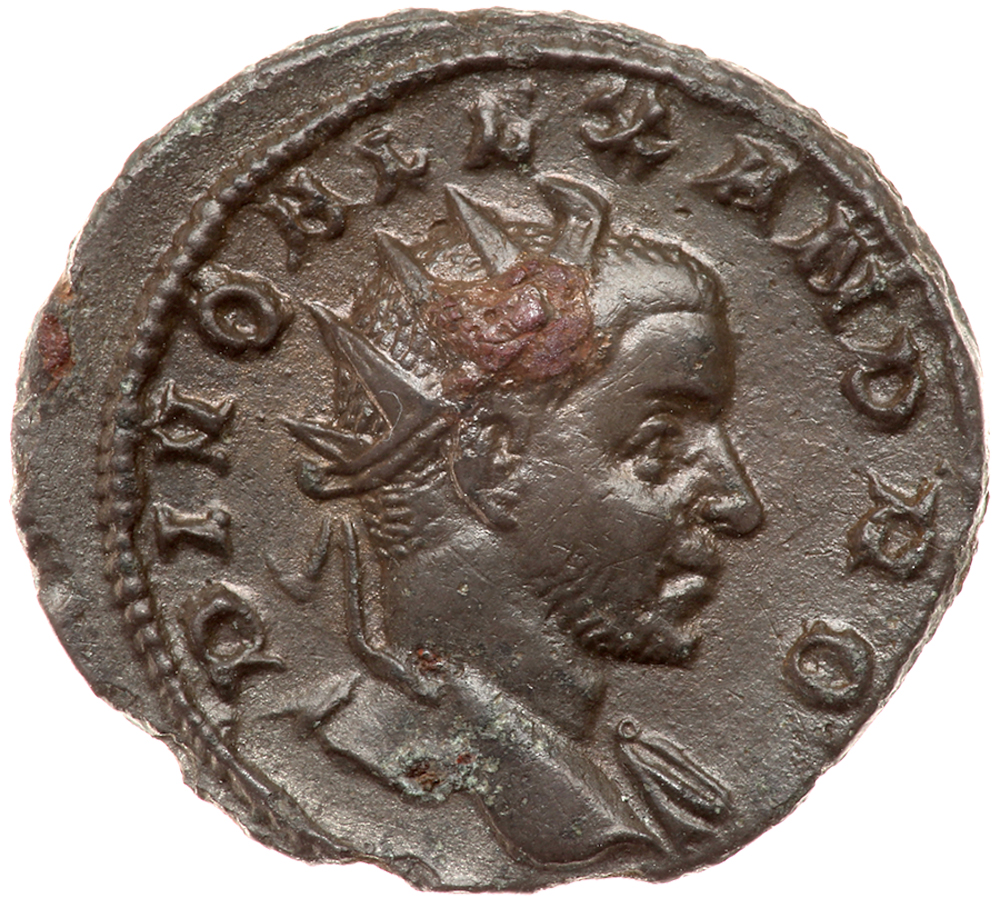By: Ira & Larry Goldberg Coins & Collectibles, Inc.
lot # 3244 - roman imperial coinage
Caracalla. Æ Medallion (24.61 g), AD 198-217. Commemorating the Pythian Games. Philippopolis in Thrace, AD 215. AVT K M AVR CEVH ANTΩNEINOC, radiate, draped and cuirassed bust of Caracalla right. Reverse: KOINON ΘPA AΛEZAN EN ΦI-ΛIΠΠOΠ/OΛI, prize crown inscribed [ΠVΘIA] containing two five prize balls set on agonistic table; below, palm and urn. Moushmov 377; Varbanov 1396. Pleasing dark green patina. Choice Very Fine.
The reverse of this medallion commemorates the Pythian Games held at Philippopolis in A.D. 215. The original Pythian Games were one of four Panhellenic festivals celebrated by the ancient Greeks, and commemorated Apollo's slaying of the giant Python, which Gaia had accidentally produced after the great deluge. According to Ovid, the monster terrorized the inhabitants of Delphi, and it proved such a formidable opponent for Apollo that the god expended all of his arrows in slaying it. The Pythian Games featured competitions for music, poetry and athletics, all sacred to Apollo in his guise as patron of the arts. The greater Pythian Games were held at Apollo's sanctuary at Delphi, but many cities throughout the Greek world held smaller, local versions.
The reverse legend states "the Commune of the Thracians (is holding) Pythian games honoring Alexander in Philippopolis." The Alexander they honor is the emperor himself, who during this time was considered a reincarnation of Alexander the Great. Throughout A.D. 214 and into 215, Caracalla was traveling throughout the lower Danubian provinces recruiting soldiers to form a special phalanx to fight the Persians in his planned upcoming eastern campaigns. A requirement of these men recruited from Alexander the Great's homeland was that they had to be at least six-feet tall. Doubtless, the games celebrated at Philippopolis at this time were attended by the emperor in person, and occasioned a large issue of coins and medallions commemorating the event such as the specimen presented here.
Estimated Value $700 - 900.
Ira & Larry Goldberg Auctioneers
Ira and Larry Goldberg are experts in the Numismatic field with over 50 years of experience. In 2010, they were each awarded a Lifetime Achievement for their contributions to the Numismatic... Read More
Send Email to Ira & Larry Goldberg Coins & Collectibles, Inc. Or Visit WebSite













